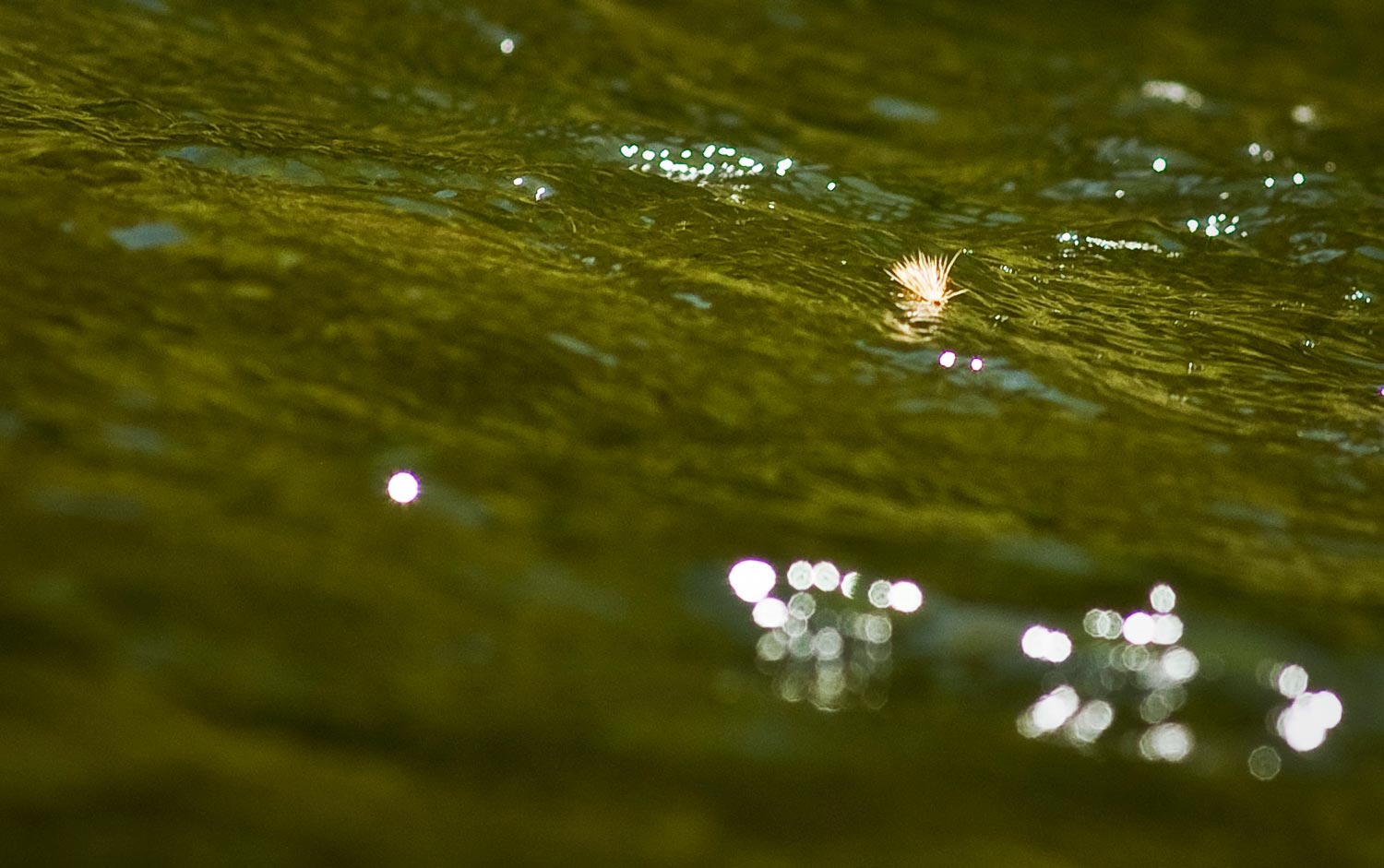By Daniel Galhardo
Don’t recast your fly until it’s had a chance.
It takes some time to learn how to read water well. But, at least when it comes to fishing mountain streams, the concept is easy to grasp: fish are looking for food and shelter, and don’t want to spend a lot of energy looking for food. Currents bring them food, slow water and breaks in the current gives them shelter. With that in mind we quickly learn that seams where current meets calm water may be the best places to target with our flies.
Once we learn this basic piece of information, we all want our fly to land with 100% accuracy where we suppose fish will be. But, hey, sometimes it won’t!
In recent days I have been taking a lot of people fishing. Most were new to fly-fishing and to tenkara. After giving them some basic instructions on how to open the rod, how to tie the line to the rod tip and tippet to the tenkara line and then tie the fly onto it, I would teach them how to cast.
It’s been said that anyone can learn how to cast with tenkara in a matter of minutes. I have found that on average it takes 7 or 8 casts to learn how to cast with tenkara fairly well, and I’m not exaggerating. But, like anything, it takes time to get the tiny fly to land exactly where they want. If I had to guess, I’d say that in the beginning about 70% of their casts will land in the vicinity of where they wanted. Perhaps 25% will land just off the target zone. And, of course, about 5% will land on the trees in front or behind them, but that’s a different article for a different day.
The 25% slightly off-target casts is what I’m interested in making a point about. Actually, it doesn’t matter if it’s 25%, 50%, or even if you’re a bit off on just 5% of your casts. The point I want to make is that if you miss your intended target by just a little bit, don’t recast immediately, let it ride!
What I noticed in the last few days of taking people fishing is that very often when their flies didn’t land exactly where they had intended, they would immediately recast. The instant the fly touched the water, perhaps just downstream from the intended area, they would attempt to make a perfect cast. I noticed that over and over again. But, most importantly, I noticed in many of these attempts, the place where their fly actually landed could have held fish.
Perhaps the fly didn’t land in the very obvious foamy whirlpool pocket behind a boulder, but rather it landed just downstream from it, on a nice slick of water they had not noticed; or, the line didn’t stretch out perfectly and landed just a bit short of their target, but on a micro-seam they didn’t realize was there.
So, I started telling “my students” if the fly doesn’t land exactly where you wanted, don’t cast it immediately, let it drift for a few seconds before casting. There is a chance it will get in front of a fish. Reducing the number of immediate recasts has the added benefit of lessening the chance of spooking fish with a lot of motion. Of course, not every spot will hold fish, and some of the missed casts will land in places that almost certainly don’t have a fish. But, I think overall it may be a good habit.
Immediately correcting a “mistake” is a hard instinct to overcome. And, yes, we all want our flies to land on that obvious “foam-is-home” pool, or on the calm piece of water we suppose a big one is hiding. But, when your fly doesn’t land there, try letting it ride and see what happens. After all the fly that is in the water is the fly that catches the fish, and fish are not only in the places we suppose they will be.
Daniel Galhardo Gink & Gasoline www.ginkandgasoline.com hookups@ginkandgasoline.com Sign Up For Our Weekly Newsletter!


Great advice! Good to hear from an old friend.
Pingback: Let It Ride -
Even bad casts catch fish.
One thing I did not see mentioned is that with a “fly-first” Tenkara cast where the line is kept off the water, even if a cast is not “on target”, there is less chance of spooking fish where the fly did land than when a PVC fly line hits the water where it wasn’t intended. That increases the likelihood that a fish where the fly did land would be in a mood to eat the fly, and that after a bit of drift a follow-up presentation to the intended target may also be greeted by an unfrightened hungry fish.
H.G. Tapply gave very similar advice that I have followed since first reading it in his Field and Stream, ‘Tap’s Tips’ column many moons ago: “Fish out every cast.”
If it lands in the river it’s a good cast!
Another reminder that good is not the enemy of perfect.